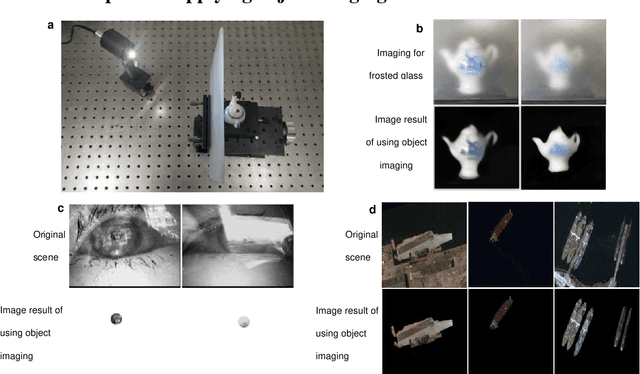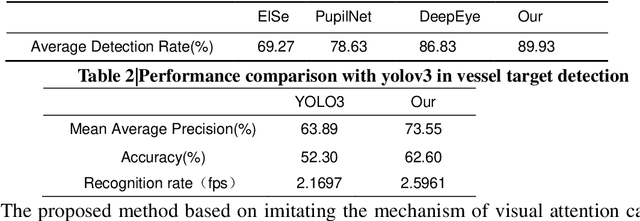Shuxin Lin
Towards Building General Purpose Embedding Models for Industry 4.0 Agents
Jun 14, 2025Abstract:In this work we focus on improving language models' understanding for asset maintenance to guide the engineer's decisions and minimize asset downtime. Given a set of tasks expressed in natural language for Industry 4.0 domain, each associated with queries related to a specific asset, we want to recommend relevant items and generalize to queries of similar assets. A task may involve identifying relevant sensors given a query about an asset's failure mode. Our approach begins with gathering a qualitative, expert-vetted knowledge base to construct nine asset-specific task datasets. To create more contextually informed embeddings, we augment the input tasks using Large Language Models (LLMs), providing concise descriptions of the entities involved in the queries. This embedding model is then integrated with a Reasoning and Acting agent (ReAct), which serves as a powerful tool for answering complex user queries that require multi-step reasoning, planning, and knowledge inference. Through ablation studies, we demonstrate that: (a) LLM query augmentation improves the quality of embeddings, (b) Contrastive loss and other methods that avoid in-batch negatives are superior for datasets with queries related to many items, and (c) It is crucial to balance positive and negative in-batch samples. After training and testing on our dataset, we observe a substantial improvement: HIT@1 increases by +54.2%, MAP@100 by +50.1%, and NDCG@10 by +54.7%, averaged across all tasks and models. Additionally, we empirically demonstrate the model's planning and tool invocation capabilities when answering complex questions related to industrial asset maintenance, showcasing its effectiveness in supporting Subject Matter Experts (SMEs) in their day-to-day operations.
Chat-of-Thought: Collaborative Multi-Agent System for Generating Domain Specific Information
Jun 11, 2025Abstract:This paper presents a novel multi-agent system called Chat-of-Thought, designed to facilitate the generation of Failure Modes and Effects Analysis (FMEA) documents for industrial assets. Chat-of-Thought employs multiple collaborative Large Language Model (LLM)-based agents with specific roles, leveraging advanced AI techniques and dynamic task routing to optimize the generation and validation of FMEA tables. A key innovation in this system is the introduction of a Chat of Thought, where dynamic, multi-persona-driven discussions enable iterative refinement of content. This research explores the application domain of industrial equipment monitoring, highlights key challenges, and demonstrates the potential of Chat-of-Thought in addressing these challenges through interactive, template-driven workflows and context-aware agent collaboration.
AssetOpsBench: Benchmarking AI Agents for Task Automation in Industrial Asset Operations and Maintenance
Jun 04, 2025Abstract:AI for Industrial Asset Lifecycle Management aims to automate complex operational workflows -- such as condition monitoring, maintenance planning, and intervention scheduling -- to reduce human workload and minimize system downtime. Traditional AI/ML approaches have primarily tackled these problems in isolation, solving narrow tasks within the broader operational pipeline. In contrast, the emergence of AI agents and large language models (LLMs) introduces a next-generation opportunity: enabling end-to-end automation across the entire asset lifecycle. This paper envisions a future where AI agents autonomously manage tasks that previously required distinct expertise and manual coordination. To this end, we introduce AssetOpsBench -- a unified framework and environment designed to guide the development, orchestration, and evaluation of domain-specific agents tailored for Industry 4.0 applications. We outline the key requirements for such holistic systems and provide actionable insights into building agents that integrate perception, reasoning, and control for real-world industrial operations. The software is available at https://github.com/IBM/AssetOpsBench.
LLM Assisted Anomaly Detection Service for Site Reliability Engineers: Enhancing Cloud Infrastructure Resilience
Jan 28, 2025Abstract:This paper introduces a scalable Anomaly Detection Service with a generalizable API tailored for industrial time-series data, designed to assist Site Reliability Engineers (SREs) in managing cloud infrastructure. The service enables efficient anomaly detection in complex data streams, supporting proactive identification and resolution of issues. Furthermore, it presents an innovative approach to anomaly modeling in cloud infrastructure by utilizing Large Language Models (LLMs) to understand key components, their failure modes, and behaviors. A suite of algorithms for detecting anomalies is offered in univariate and multivariate time series data, including regression-based, mixture-model-based, and semi-supervised approaches. We provide insights into the usage patterns of the service, with over 500 users and 200,000 API calls in a year. The service has been successfully applied in various industrial settings, including IoT-based AI applications. We have also evaluated our system on public anomaly benchmarks to show its effectiveness. By leveraging it, SREs can proactively identify potential issues before they escalate, reducing downtime and improving response times to incidents, ultimately enhancing the overall customer experience. We plan to extend the system to include time series foundation models, enabling zero-shot anomaly detection capabilities.
Towards Automated Solution Recipe Generation for Industrial Asset Management with LLM
Jul 26, 2024



Abstract:This study introduces a novel approach to Industrial Asset Management (IAM) by incorporating Conditional-Based Management (CBM) principles with the latest advancements in Large Language Models (LLMs). Our research introduces an automated model-building process, traditionally reliant on intensive collaboration between data scientists and domain experts. We present two primary innovations: a taxonomy-guided prompting generation that facilitates the automatic creation of AI solution recipes and a set of LLM pipelines designed to produce a solution recipe containing a set of artifacts composed of documents, sample data, and models for IAM. These pipelines, guided by standardized principles, enable the generation of initial solution templates for heterogeneous asset classes without direct human input, reducing reliance on extensive domain knowledge and enhancing automation. We evaluate our methodology by assessing asset health and sustainability across a spectrum of ten asset classes. Our findings illustrate the potential of LLMs and taxonomy-based LLM prompting pipelines in transforming asset management, offering a blueprint for subsequent research and development initiatives to be integrated into a rapid client solution.
An optical biomimetic eyes with interested object imaging
Aug 08, 2021

Abstract:We presented an optical system to perform imaging interested objects in complex scenes, like the creature easy see the interested prey in the hunt for complex environments. It utilized Deep-learning network to learn the interested objects's vision features and designed the corresponding "imaging matrices", furthermore the learned matrixes act as the measurement matrix to complete compressive imaging with a single-pixel camera, finally we can using the compressed image data to only image the interested objects without the rest objects and backgrounds of the scenes with the previous Deep-learning network. Our results demonstrate that no matter interested object is single feature or rich details, the interference can be successfully filtered out and this idea can be applied in some common applications that effectively improve the performance. This bio-inspired optical system can act as the creature eye to achieve success on interested-based object imaging, object detection, object recognition and object tracking, etc.
 Add to Chrome
Add to Chrome Add to Firefox
Add to Firefox Add to Edge
Add to Edge